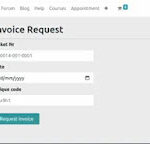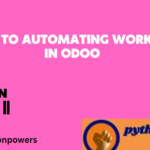A Guide to Automating Workflows in Odoo
In the fast-paced world of modern business, efficiency and productivity are paramount. Manual and repetitive tasks not only consume valuable time but also hinder growth opportunities. This is where the power of automation comes into play, and in the realm of business management software, Odoo stands as a frontrunner in offering robust workflow automation capabilities. In this guide, we will delve into the art of automating workflows using Odoo, unlocking a realm of operational efficiency and strategic advantage.
Understanding the Essence of Workflow Automation
Workflow automation is not merely about delegating mundane tasks to machines; it’s about optimizing processes, minimizing errors, and fostering collaboration. By strategically automating workflows in Odoo, businesses can ensure seamless data flow, timely notifications, and streamlined approvals. This leaves teams with more time to focus on high-value tasks, ultimately enhancing customer experiences and boosting overall productivity.
Identifying Automation Opportunities
Begin the journey towards automation by thoroughly mapping your existing processes. Identify bottlenecks, repetitive tasks, and areas where delays commonly occur. Whether it’s lead management in the CRM, inventory tracking in the warehouse, or invoice approvals in finance, Odoo offers modules tailored to various business functions that can be automated for maximum efficiency.
Leveraging Odoo’s Workflow Automation Tools
Odoo provides a versatile workflow automation tool that allows businesses to create custom processes tailored to their specific needs. These workflows can encompass multiple steps, conditions, and actions. From setting triggers for automated actions to defining conditions for task escalation, Odoo’s workflow designer offers a visual canvas for constructing intricate yet intuitive workflows.
Designing a Workflow: Step by Step
- Identify the Process: Define the workflow’s scope, purpose, and the departments or individuals involved.
- Map the Flow: Using Odoo’s visual interface, lay out the sequence of steps and decisions that constitute the workflow.
- Set Triggers and Conditions: Specify the events that initiate the workflow, such as a new lead creation or a purchase order approval request.
- Define conditions that determine the workflow’s path, ensuring that each action is contextually relevant.
- Assign Actions: Allocate tasks, notifications, and approvals to respective users or teams. This could include sending automated emails,
- updating records, or triggering follow-up tasks.
- Testing and Optimization: Prior to deploying the workflow, rigorously test it with sample data to ensure all triggers, conditions, and actions function as intended. Make necessary adjustments for optimal performance.
Measuring the Impact of Automation
Automation isn’t a one-and-done process; it requires continuous evaluation and refinement. Measure key performance indicators (KPIs) before and after implementing automated workflows. Assess metrics like process completion time, error rates, and resource utilization to quantify the tangible benefits of your automation efforts.










